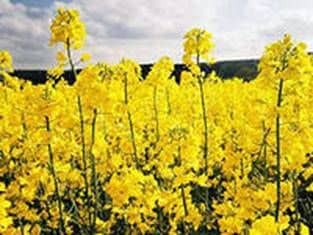
Rape is a one-year-old winter or spring plant from the cruciferous family. Sheets have a lyre similar, glabrous, gray-green. Flowers are yellow, collected in a rare cyst like inflorescences. Fruit is a narrow pod. In Ukraine rapeseed is quite common in the western regions.
There are rapeseed winter and spring. Due to the fact that winter yields more stable and high yields, it is more common.
Winter rape is a good honey plant. Its flowering occurs in May (the period from the flowering of fruit trees) and lasts 25-30 days.
Culture promotes the early development of bee colonies. The flower contains, on the average, 0.7 mg of sugar in nectar with fluctuations from 0.3 to 0.9 mg, depending on the variety. Honey – productivity of 1 ha of sowing – 100-140 kg. One bee family can harvest 3-4 kg and more rapeseed honey a day, the aroma of which resembles the smell of the flowers of this plant.
The honey color is whitish, the taste is low, the consistency is dense. Honey quickly crystallizes, and therefore it is undesirable to leave it for the wintering of bees.
One flower of winter rapeseed releases 1.283 mg of pollen, 1 ha of sowing – 90.9-129.7 kg.
Winter rape is an insect pollinating plant. Its main pollinators are honey bees. For 1 ha of sowing for a good pollination of the testes, 2-3 bee colonies are necessary.
Дезинфекция пчелиных рамок. Хранение пчелиных рамок.
Медоносы